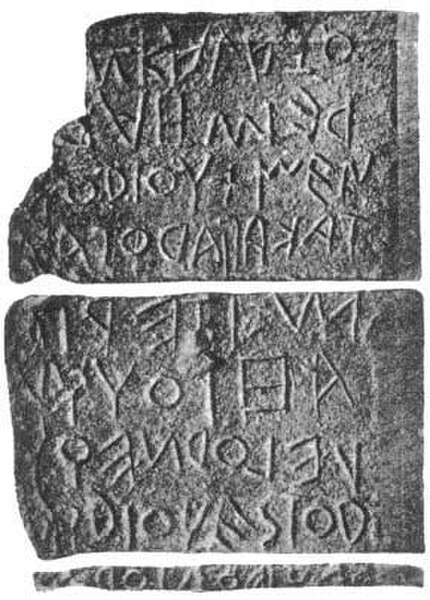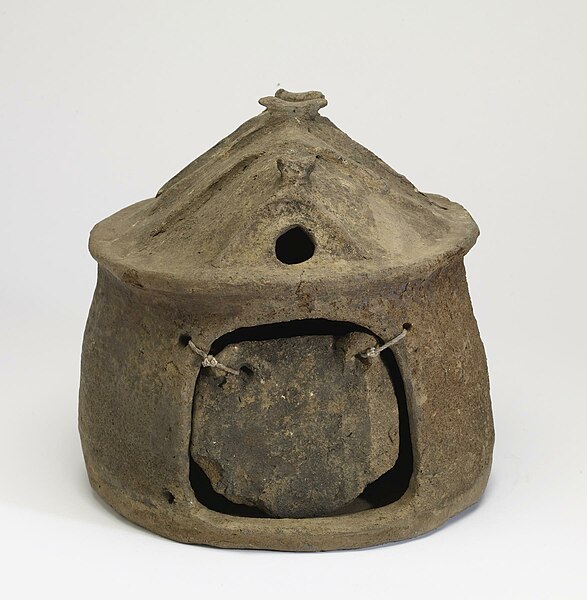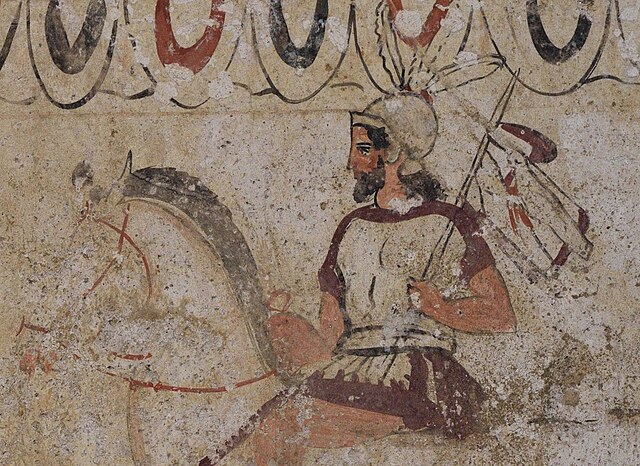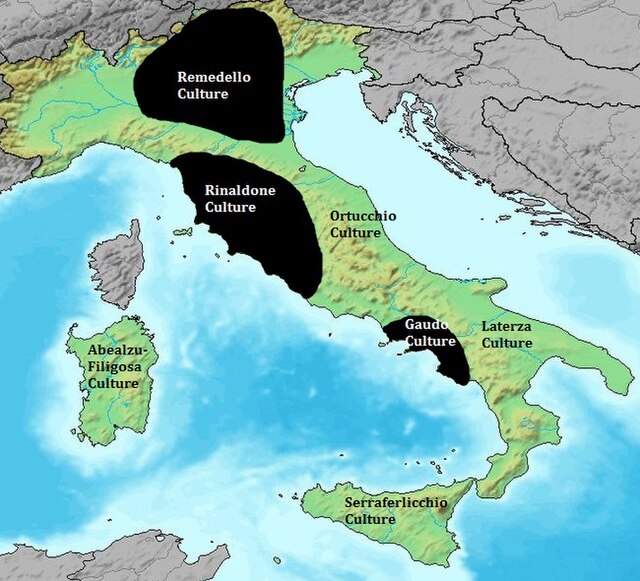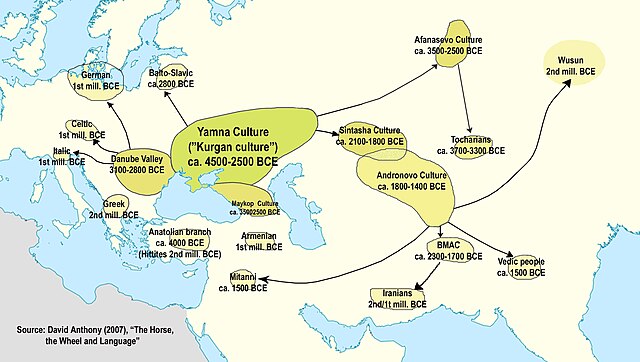The Latins, sometimes known as the Latials or Latians, were an Italic tribe which included the early inhabitants of the city of Rome. From about 1000 BC, the Latins inhabited the small region known to the Romans as Old Latium, that is, the area between the river Tiber and the promontory of Mount Circeo 100 km (62 mi) southeast of Rome. Following the Roman expansion, the Latins spread into the Latium adiectum, inhabited by Osco-Umbrian peoples.
The Lapis Niger, probably the oldest extant Latin inscription (c. 600 BC)
Villanovan culture cinerary hut-urn, showing the likely shape of Romulus' Hut in Rome: a simple mud-and-straw shelter
The "Rain Miracle": Jupiter the Rainmaker rescues the Romans during the Marcomannic Wars (AD 166–80). The soldiers of legion XII Fulminata, who were surrounded by the Quadi Germans and severely dehydrated, were saved by a thunderstorm, which reportedly materialised out of a clear sky. Note the god's wings. Detail from the Column of Marcus Aurelius, Rome
View of Albanus mons (Monte Cavo, 949m), the sacred mount of the Latins in the Alban Hills. The annual religious rites of the Latin Festival were held on its summit. In foreground, the Alban lake, filling the caldera of an extinct volcano
The Italic peoples were an ethnolinguistic group identified by their use of Italic languages, a branch of the Indo-European language family.
Return of the warrior. Detail of fresco from the Lucanian tomb, 4th century BC.
Main Italian cultures of the Copper Age
Indo-European Migrations. Source David Anthony (2007). The Horse, The Wheel and Language.
Samnite theater in Pietrabbondante, Molise, Italy

